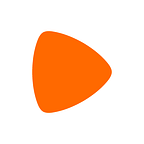Six ingredients of successful interdisciplinary collaboration
How can multiple disciplines forge a common vision? Senior Product Designer at Zalando Retail Core, Sven Wiehl, defines his six Cs of effective collaboration within cross-functional teams.
The most brilliant ideas and creative solutions emerge from interdisciplinary collaboration. It’s the ground from which innovation grows. But in order for it to be at its most fertile, it relies upon the right conditions. When Zalando Retail Core — a hybrid team of Product Design, Product Management, and Engineering talent — was tasked with replacing the Excel-based tool that was central to their work, they also discovered the need to rethink their mode of cooperation. In order to smoothly move toward their goals, they required an effective framework for balanced decision-making and productive problem-solving.
Retail Core drives the Zalando partner- and internal-facing wholesale business — from onboarding product catalogs to creating online multimedia content, and from aligning purchase quantities to scheduling deliveries into our warehouses. The team thinks systematically about how the design approach of our partners and stakeholders fits into the landscape, and builds state-of-the-art design systems that help us to scale.
Harnessing his Product Design dexterity, Senior Product Designer, Sven Wiehl, devised his six Cs to cross-functional alignment: Count, Competence, Consensus, Conciseness, Circles, and Chronology. Since the team started implementing these principles in mid-2020, friction has lessened, communication has strengthened, and focus has surged. What’s more, Retail Core has received some shining feedback from the B2B users they work so hard to delight.
Is your teamwork in need of a level up? Read on for Sven’s insight.
1. Count
Even functional representation
The simplest way to make a group decision is to put it to a vote. But what happens when each discipline or function is unevenly represented? Do some voices get heard more than others? In order to align on major decisions during product discovery, definition and design, Sven proposed that the team of thirteen should be split into smaller expert groups: a triad of one Product Designer, one Product Manager, and one Engineer. This close collaboration of representatives immediately enabled deeper understanding and, as a result, less resistance within the wider team.
2. Competence
Common research
There is no ‘I’ in ‘team.’ In order for interdisciplinary collaboration to be successful, individuals should not only be focused on their own practice, but aware of the practice of the others, and how it all comes together to form the whole. When it comes to the collective decision-making process, how can you truly convince others of the importance of a problem if they don’t fully understand how you got there?
Going forward, Sven knew that, in order for the team to find common ground, common research also had to be done. The user problems and solutions that had mostly concerned him as a UX designer became everyone’s business. “This made cross-functional alignment on these topics much easier,” he explains. “The direct exposure of the other team members to our users and their current experience reduced the need for me, as a Product Designer, to explain. Common research means that every decision-maker can empathize. As a result of this newfound awareness, we can align on the right problems to be solved for users and collectively identify the right solutions.”
3. Consensus
Clear resolutions
Thanks to minimized resistance, when objections do arise, there is now more space to address them. “We made them visible to review with a Red Amber Green (RAG) system,” Sven tells us. “Red signals the items with the most conflicting opinions.”
Once the team has clarified the issues, they define clear follow-up steps to resolve them. For example, checking quantifying data, validating assumptions with users, or simply iterating on the details. “This has helped us to come to more confident decisions as a cross-functional team. We acknowledge that differences of opinion are good opportunities to learn and to fine-tune solutions. Often, resistance is a sign that we don’t understand enough yet.”
4. Conciseness
Guiding vision
When making collective decisions, it’s helpful to have a shared vision. Sven found that providing clear guidance on desired user experience outcomes makes it easier to rule out inconsistent or arbitrary solutions. “By articulating better goals,” he explains, “we can use them to measure the quality of a design and to raise the bar overall.” One of the UX outcomes is to enable our retail buyers to work with “fly over sizing”: reducing clicks and overall effort with semi-automated sizing recommendations.
5. Circles
Expert feedback
For Zalando’s Product Design teams, circles are one of the most important rituals: regularly coming together to exchange with peers and managers, to deep dive into design questions, and to receive feedback. Such feedback loops allow teams to constantly reflect on what they’ve done and how it can be improved, accelerating innovation. “We established two design circles,” says Sven. “First, a smaller Product Design circle, involving the designers working on our project. Then, a wider circle, known as the Design Club, which involves designers from other product teams.”
6. Chronology
Outline the process
Discover, define, design, deliver — the team refined the 4D process with templates and best practices, allowing them to optimize their focus on every project. “It’s a peaceful feeling to have a strong process in place,” Sven says. “You know you can trust it to guide the way to great outcomes in a collaboration. It has also worked well when onboarding new designers, offering a blueprint for identifying the right problems, coming up with the right solutions, and building them correctly.”
Do you love crafting joyful user experiences through empathy, science and creativity? Retail Core is currently recruiting for Senior and Principal Product Designers and Product Design Managers.
